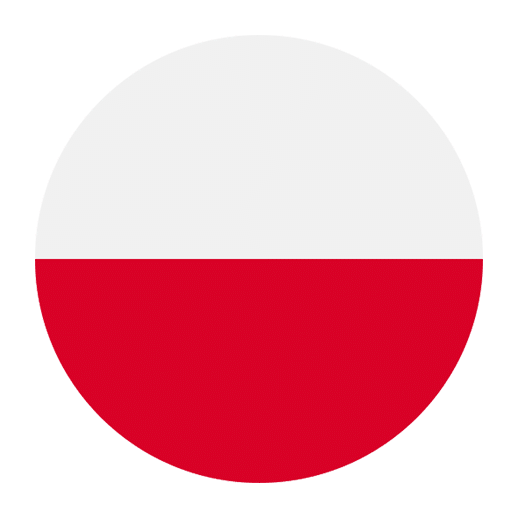The Polish language, or “język polski,” holds a unique and influential position in Central Europe. This influence is rooted in Poland’s rich history, strategic geographical location, and vibrant cultural heritage. For English speakers interested in understanding the dynamics of Central European languages and cultures, examining the role of Polish can provide valuable insights. This article delves into the historical, cultural, and linguistic impacts of the Polish language in Central Europe, offering a comprehensive overview for language learners.
Historical Context of Polish Influence
Poland’s history is marked by periods of both tremendous power and extreme adversity. The Polish-Lithuanian Commonwealth, established in 1569, was one of the largest and most populous countries in Europe during its zenith. This powerful political entity influenced the region significantly, spreading Polish culture and language across Central Europe. The Commonwealth included not only modern-day Poland but also parts of present-day Lithuania, Ukraine, Belarus, and Latvia.
Despite the partitions of Poland in the late 18th century, which saw the country divided between Prussia, Russia, and Austria, the Polish language remained a symbol of national identity and resistance. During the 123 years of partition, Polish culture and language were preserved through clandestine education and literature, maintaining a sense of unity among the Polish people.
The resurgence of Poland as a sovereign state after World War I and its subsequent history under Soviet influence during the Cold War further solidified the Polish language’s role in the region. Today, Poland is a member of the European Union and NATO, continuing to exert cultural and political influence in Central Europe.
Linguistic Characteristics of Polish
Understanding the Polish language’s influence requires familiarity with its linguistic characteristics. Polish is a West Slavic language, closely related to Czech, Slovak, and Sorbian. It is known for its complex phonetics, extensive use of consonant clusters, and a rich system of inflections.
Phonetics and Pronunciation
Polish phonetics can be challenging for English speakers due to its use of sounds that do not exist in English. For example, the Polish letter “ł” is pronounced like the English “w,” while “ś” and “ź” represent sounds somewhat similar to the English “sh” and “zh,” but softer and more palatalized. The presence of nasal vowels, such as “ą” and “ę,” adds another layer of complexity.
Grammar and Syntax
Polish grammar is highly inflectional, meaning that the roles of words in a sentence are indicated by changes in their endings. This is in contrast to English, which relies more on word order and auxiliary words. Polish nouns, adjectives, pronouns, and numerals are declined according to seven cases: nominative, genitive, dative, accusative, instrumental, locative, and vocative. Verbs are conjugated for person, number, tense, mood, and aspect.
Vocabulary and Borrowings
Polish vocabulary reflects its history of interactions with various cultures and languages. It contains numerous loanwords from Latin, German, French, Italian, and more recently, English. These borrowings often reflect historical trade, scientific, and cultural exchanges.
Polish Language and Culture
Language is a carrier of culture, and the Polish language is no exception. Polish literature, music, cinema, and folklore offer rich avenues for exploring the cultural heritage of Central Europe.
Literature
Polish literature has produced many notable figures, such as Adam Mickiewicz, Henryk Sienkiewicz, and Wisława Szymborska. Mickiewicz’s epic poem “Pan Tadeusz” is a cornerstone of Polish literary heritage, while Sienkiewicz’s historical novels, including “Quo Vadis,” have gained international acclaim. Szymborska, a Nobel laureate, is celebrated for her insightful and accessible poetry.
Music
Poland’s musical contributions are significant, with Frédéric Chopin being one of the most famous composers of the Romantic era. His compositions for the piano are celebrated worldwide. In contemporary times, Polish jazz and popular music have also made their mark on the international stage.
Cinema
Polish cinema is renowned for its artistic and intellectual depth. Directors like Andrzej Wajda, Krzysztof Kieślowski, and Roman Polanski have created films that resonate globally. Wajda’s “Ashes and Diamonds” and Kieślowski’s “Three Colors” trilogy are particularly noteworthy.
Folklore and Traditions
Polish folklore is rich with legends, fairy tales, and traditional music and dance. Festivals such as “Wianki,” celebrating the summer solstice, and “Dożynki,” the harvest festival, are important cultural events that highlight Poland’s agrarian traditions and communal spirit.
Polish Language in Modern Central Europe
In contemporary Central Europe, the Polish language continues to play a vital role. Poland’s membership in the European Union has facilitated greater cultural and economic exchanges, increasing the visibility and influence of the Polish language.
Polish as a Second Language
Interest in learning Polish has grown, particularly among students, professionals, and expatriates living in Poland. Universities across Europe offer Polish language courses, and there are numerous online resources and language exchange programs available.
Economic Influence
Poland’s economy is one of the largest and most dynamic in Central Europe. As a result, knowledge of Polish can be an asset for businesses and professionals operating in the region. Many multinational companies have offices in Poland, and proficiency in Polish can enhance career opportunities.
Media and Communication
Polish media, including television, radio, and online platforms, have a broad audience both within and outside Poland. Polish-language news outlets and entertainment channels contribute to the dissemination of Polish culture and perspectives across Central Europe.
Challenges and Opportunities for Learners
Learning Polish, like any language, presents both challenges and opportunities. English speakers may find the pronunciation and grammar particularly daunting. However, the rewards of mastering Polish are manifold.
Challenges
– **Pronunciation**: The unique sounds and consonant clusters in Polish can be difficult for English speakers to master.
– **Grammar**: The inflectional nature of Polish grammar requires a significant investment of time and effort to learn and apply correctly.
– **Vocabulary**: While there are many loanwords in Polish, the majority of the vocabulary is distinct from English, requiring extensive memorization.
Opportunities
– **Cultural Insight**: Learning Polish opens the door to understanding and appreciating Poland’s rich cultural heritage.
– **Economic Benefits**: Proficiency in Polish can enhance career prospects in various fields, including business, academia, and international relations.
– **Cognitive Benefits**: Learning a complex language like Polish can improve cognitive flexibility and problem-solving skills.
Strategies for Learning Polish
For English speakers interested in learning Polish, adopting effective strategies can make the process more manageable and enjoyable.
Immersive Learning
Immersive learning involves surrounding oneself with the Polish language as much as possible. This can include watching Polish films, listening to Polish music, and reading Polish books. Immersion helps learners develop a natural feel for the language and improves listening and comprehension skills.
Language Exchange
Language exchange programs, where learners practice Polish with native speakers in exchange for teaching English, can be highly effective. These programs provide real-life conversational practice and cultural exchange.
Formal Education
Enrolling in Polish language courses at a university or language school offers structured learning and access to experienced instructors. Many institutions offer beginner to advanced courses, catering to different proficiency levels.
Online Resources
There are numerous online resources available for learning Polish, including language apps, online courses, and educational websites. Platforms like Duolingo, Babbel, and Memrise offer interactive lessons and practice exercises.
Consistent Practice
Consistent practice is key to language acquisition. Setting aside regular time for studying Polish, practicing speaking, and reviewing vocabulary and grammar can lead to steady progress.
Conclusion
The Polish language’s influence in Central Europe is profound and multifaceted. Understanding this influence involves exploring Poland’s historical legacy, linguistic characteristics, cultural contributions, and modern-day significance. For English speakers, learning Polish offers a gateway to appreciating a rich cultural heritage, enhancing career opportunities, and gaining cognitive benefits. While the journey of learning Polish may present challenges, the rewards are well worth the effort. Whether through immersive learning, language exchange, formal education, or online resources, the path to mastering Polish is accessible to all who are willing to embark on this linguistic adventure.

